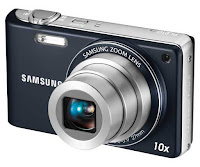CATEGORIES OF
COMPUTERS
A)SUPERCOMPUTERS
-The fastest and most powerful type of computer that is capable of processing trillions of instructions per second.
Uses Of Supercomputers
 |
| Nuclear energy research |
 |
| Molecular calculations |
 |
| Petroleum exploration |
 |
| Weather forecasting |
 |
| Simulations and applications in medicine |
 |
| Aerospace research |
 |
| Breaking encryption code |
 |
| Online banking |
B)MAINFRAME COMPUTERS
-Large and powerful computer that handles many connected users simultaneously and used to host a large amount of data and programs.
Uses Of Mainframe Computers
 |
| Insurance Companies -To process insurance claims |
 |
| Hotels and Airlines -Hotel bookings, airline flight reservations |
 |
| Banks -Online bill payment |
 |
| Hospitals -To manage patient records and health services |
C) PERSONAL COMPUTERS
- Type of computer based on a microprocessor and designed to be used by one person at a time.
TYPES OF PERSONAL COMPUTERS
 |
| Desktop Computers -Designed to fit on or next to a desk, with input and output devices separate from the system unit. |
 |
| Laptop Computers -Portable computer that opens to reveal a screen and keyboard, that is designed to be carried around easily. |
D) MOBILE COMPUTERS AND DEVICES
Mobile computer: Portable personal computer, such as laptop or tablet, designed so that user easily can carry it from place to place.
Types of mobile computer
 |
| Laptop Computer |
 |
| Netbook |
 |
| Slate tablets |
 |
| Tablets |
 |
| Ultra thin laptop |
Mobile devices: Computing device small enough to hold in your hand.
Types Of Mobile Devices:
 |
| Digital Camera |
 |
| Handheld computer |
 |
| Portable and Digital media players. |
 |
| Smartphone |
 |
| E-book Readers |
 |
| Wearable devices |
Uses Of Mobile Computers And Devices
| -Home or office environment. -Web browsing and e-mail. -Read e-books. -Play movies and games. -Send instant texts. -Take photos or videos. -Manage contacts or schedule appointment. |
E) Embedded Computers
-A tiny computer embedded into a product to perform specific functions or tasks for that product.
Products that contain embedded computers:
-Consumer electronics
-Home automation devices
-Computer devices and office machine
-Automobiles
-Process controllers and robotics
COMPARISON BETWEEN TYPE OF COMPUTERS
CATEGORIES OF COMPUTERS
|
|||
CATEGORY
|
CAPABILITIES
|
||
PHYSICAL SIZE
|
SPEED
|
STORAGE
|
|
Supercomputers
|
Full room of equipment.
|
-The fastest and most powerful type of
computer with thousands of processors capable of processing trillions of
instructions per second.
|
Highest storage capacity that can store
complex and sophisticated applications, and can store more than 20,000 times
the data and information of an average desktop computers.
|
Mainframe computers
|
Partial room to a full room of
equipment.
|
-Large and powerful computer that can
process millions of instructions per second and handle thousands of connected
computers.
|
Larger storage capacity that can store
data, instructions,and informations for business applications and activities.
|
Personal computers
|
Small computer from desktop to laptop
computers that fits on a desk or fits on your lap.
|
- Type of computer based on a
microprocessor and designed for individuals and business, capable to provide
computing power for home and office environment.
|
-Storage capacity ranges from GB to TB
that can store home and office software.
|
Mobile computers
|
Computers that are designed to be
carried around easily about the size of a paper notebook to fit in one hand.
|
||
Mobile devices
|
Very small communications device.
(pocket-sized computers)
|
-A computer based on a microprocessor
that contain built in computing or Internet capabilities.
|
Storage capacity up to GB that can
store mobile applications.
|
Embedded computers
|
A tiny computer embedded into a product.
(installed in a device)
|
Tiny specialized microprocessors
installed in smart appliances and automobiles.
|
Storage capacity normally in KB.
|




No comments:
Post a Comment